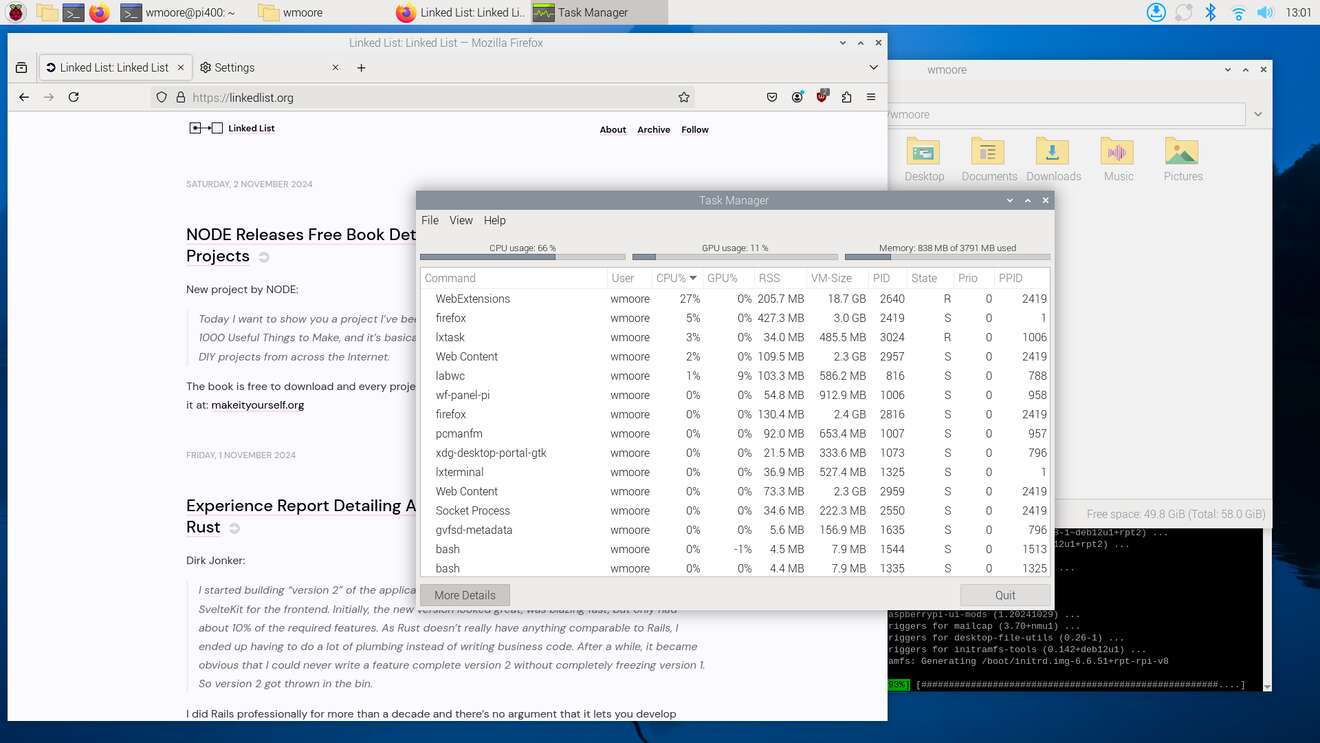Simon Long writing on the Raspberry Pi blog:
With the release of Bookworm in 2023, we replaced mutter with a new dedicated Wayland compositor called wayfire and made Wayland the default mode of operation for Raspberry Pi 4 and 5, while continuing to run X on lower-powered models.
After much optimisation for our hardware, we have reached the point where labwc desktops run just as fast as X on older Raspberry Pi models. Today, we make the switch with our latest desktop image: Raspberry Pi Desktop now runs Wayland by default across all models.
Labwc describes itself as “a wlroots-based window-stacking compositor for wayland, inspired by openbox”. I tried out the new release on a Raspberry Pi 400 with 4Gb of RAM and it runs quite smoothly. The user-experience feels unchanged from the previous release, with the top-panel, menus, and window decorations all operating the same as earlier releases.

While the CPU performance of the Pi still means operations like starting applications can be a little sluggish window compositing is buttery smooth with no sign of tearing or lag. This feels like a great change and quite the win for the Labwc project.